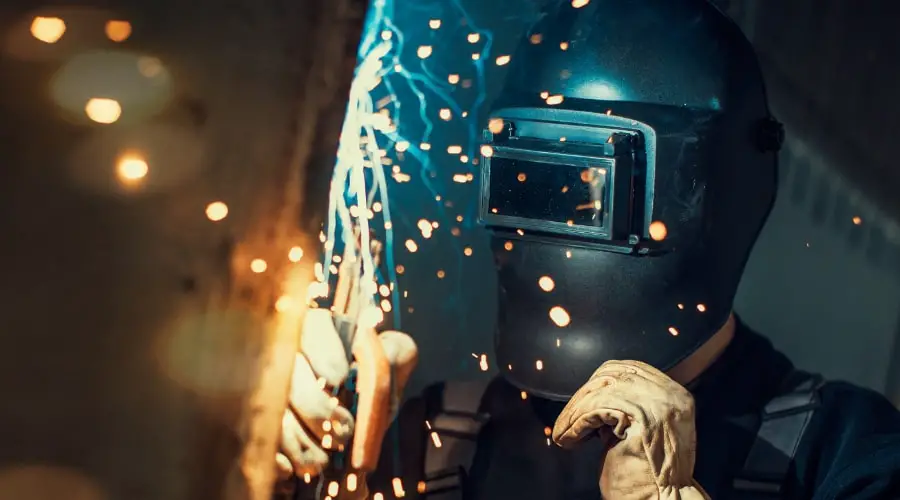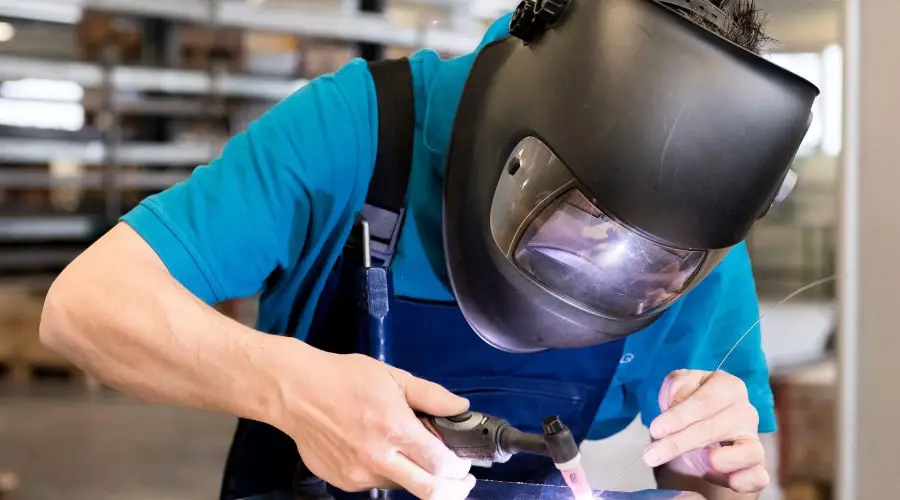Welding is a demanding task that requires the correct set of safety equipment. Among these, a welding helmet is undoubtedly the most critical piece. It protects your eyes and faces from harmful radiation, sparks, and heat. But like any safety gear, a welding helmet is not designed to last forever. It undergoes wear and tear, and its protective features might deteriorate over time, posing potential safety risks.
So, when should I replace my welding helmet? How do you determine if it’s time to bid goodbye to your old reliable helmet and invest in a new one? This article will guide you through the signs to watch for, the factors that affect your welding helmet’s lifespan, and how to choose the correct replacement when the time comes. Let’s dive in!

The Role of a Welding Helmet
A welding helmet is an essential personal protective equipment for anyone involved in welding or cutting operations. It protects your eyes and faces from sparks, heat, and harmful radiation. Without it, welders risk developing severe eye conditions such as ‘welder’s flash,’ cataracts, or retinal damage.
Understanding Welding Helmet Lifespan
As with all safety equipment, a welding helmet does not last forever. Its lifespan depends on various factors, including the type of helmet, how often it’s used, and the conditions under which it’s used.
The Factors That Affect Welding Helmet Lifespan
Certain factors, like the quality of the helmet, frequency of use, and environmental conditions, can significantly influence the lifespan of your welding helmet. For example, a helmet used daily in a professional welding shop might need replacement sooner than one used occasionally for home projects.
How to Know When Your Welding Helmet Needs Replacement
Identifying when to replace your welding helmet involves checking for physical damages and assessing its functionality.
Signs of Physical Damage
Cracks and Breaks
Inspect your helmet for any visible signs of wear and tear. Cracks and breaks in the helmet shell can reduce its effectiveness in providing protection. If the body is compromised, it’s time to replace your helmet.
Worn-out Headgear
The headgear should hold the helmet securely in place. If the headgear is worn out and the helmet doesn’t fit properly, it might not protect you effectively. In this case, it’s time to get a new helmet.
Functionality Issues
Auto-Darkening Failure
Auto-darkening helmets automatically adjust the lens’s shade based on the welding arc’s intensity. If this feature isn’t working correctly, it could expose your eyes to harmful light and radiation.
Battery Problems
If your helmet uses batteries and you’re consistently experiencing problems even after changing them, it may be a sign that it needs replacement.
Preventing Premature Welding Helmet Wear
Regular Maintenance
Cleaning and Storage
Proper cleaning and storage are crucial for extending the life of your welding helmet. Always store your helmet in a clean, dry place to prevent damage and corrosion.
Periodic Checks
Regularly inspect your helmet for any signs of damage. This will help you spot issues early and prevent them from becoming significant problems.

Choosing the Right Replacement Welding Helmet
Choosing a new welding helmet involves careful consideration of various factors.
Considerations When Buying a New Welding Helmet
Helmet Standards and Safety
When buying a new helmet, ensure it meets all relevant safety standards. Check that a reputable body has tested and certified it for maximum protection.
Comfort and Adjustability
The helmet should have adjustable features for comfort and fit. It should be light enough to wear for extended periods without causing strain or discomfort.
Frequently Asked Questions:
1. How often should I replace my welding helmet?
The replacement frequency depends on many factors, including the type of helmet, frequency of use, and the conditions under which it’s used. However, if you notice any signs of physical damage or functionality issues, it’s time to replace it.
2. Can I replace the lens of my welding helmet instead of the whole helmet?
Yes, if the lens is the only part of the helmet that is damaged or not functioning correctly, you can replace it. However, if the helmet’s shell or headgear is damaged, you’ll need to replace the entire helmet.
3. Are expensive welding helmets worth it?
More expensive helmets offer better protection, comfort, and additional features such as auto-darkening. However, choosing a helmet that meets safety standards and suits your specific needs is essential.
4. How can I prolong the life of my welding helmet?
Regular maintenance and proper storage can help prolong the life of your helmet. Check it regularly for signs of damage and clean it according to the manufacturer’s instructions.
5. Do auto-darkening helmets expire?
Auto-darkening helmets don’t have a specific expiration date, but their functionality can deteriorate over time. If the auto-darkening feature stops working correctly, it’s time to replace the helmet.
Conclusion
Welding helmets are vital for your safety while welding. Knowing when to replace them is essential to ensure they offer maximum protection. Keep a keen eye on the signs of physical damage and functionality issues, and replace your helmet when it’s no longer safe. Regular maintenance and storage in a proper environment can prolong your helmet’s lifespan. When choosing a new helmet, prioritize safety standards and comfort.
Helmetslab is a website that focuses on providing in-depth reviews and information about different types of helmets, including motorcycle helmets and others helmets. I am writing a post with proper research on the info that helps helmet users.

